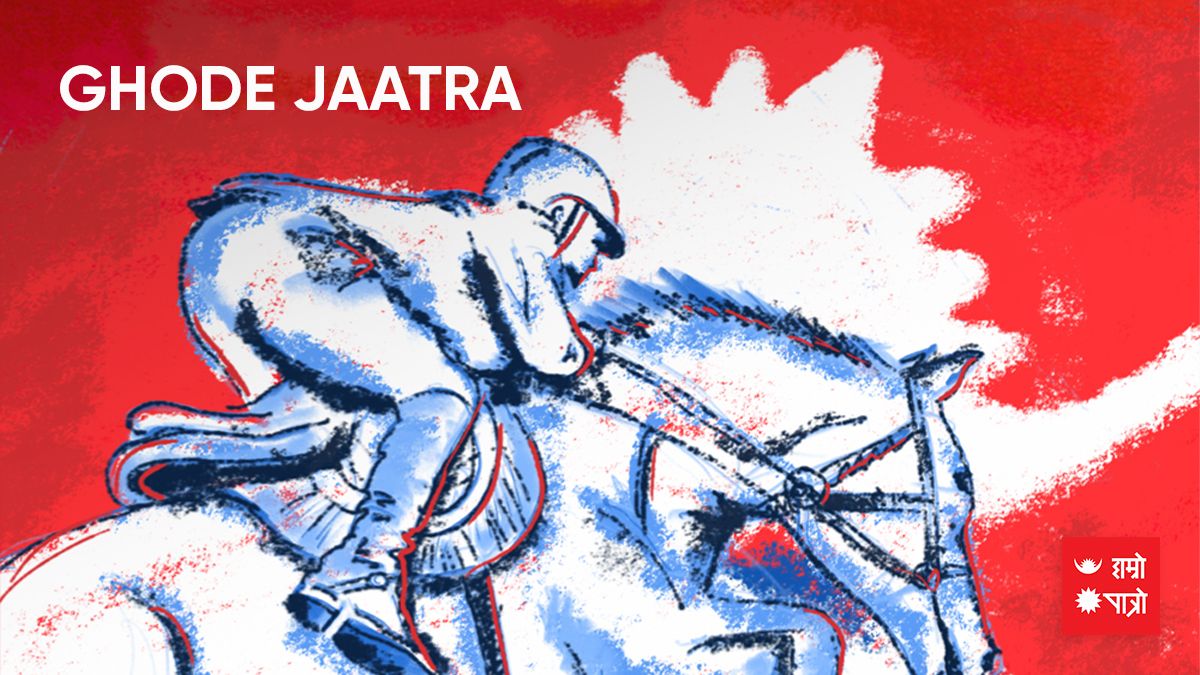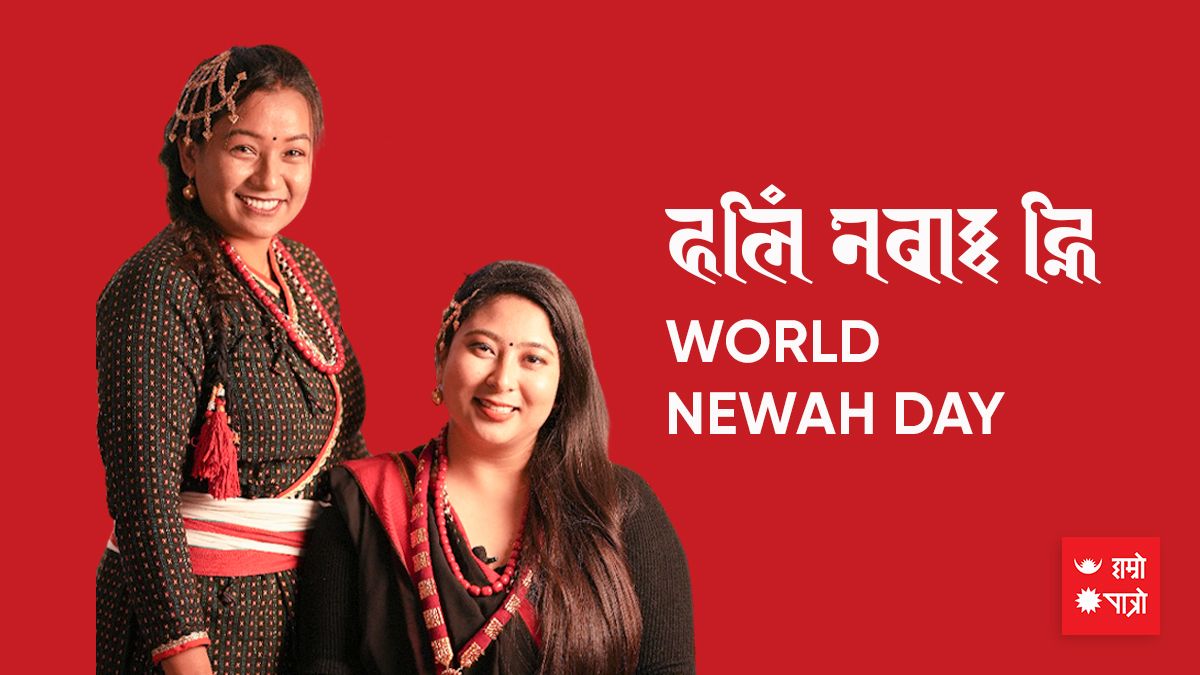
Ghodejatra, a day of horse riding and acrobats in Nepal.
Importance of horse in human civilization
In the history of human civilization such as horses, horseback riding, horse riding knights, the cooperation between horses and human beings has been continuously explained in various documents of history and various stories about this relationship are still alive. Horses have always been and still are the classic and traditional ways of human mobility. From Europe, America, Middle East Asia to the invention of trains and vehicles around the world, horses were the only reliable and fastest way to ride. Be it ancient Mahavarata or the conqueror's conquests, horses and horse riders were the primary intervention of war strategy.
Importance of horses in Sanatana scriptures
Even the prehistoric scriptures and Sanatan texts have mentioned and acknowledged horses as a very important creature for human existence and human life. The biggest Yagya performed in Sanatan philosophy is called "Aswomegh Yagya", Aswo means horse in Sanskrit, hundreds of horses are released at the end of this Yagya and these horses are believed to have peace, harmony, and happiness wherever they go, whichever direction they choose.
Horse races and several other such acrobats are celebrated today in Kathmandu, the capital of Nepal, in honor and cooperation of these extremely loyal and speedy horses who have left their mark both on the pages of history and their footsteps on the dust of Nepali soil. The presence of the horses is a must, whether it be a picture or a statue, to remember the ranks and various other warriors in different places of Kathmandu. A ruler's statue is not complete without them being on a horse. Be it Napoleon or Kublai Khan or Junga Bahadur or Prithvi N Shah, without horses their legacy and anecdotes are incomplete.
Ghode Jatra as one of the most original Jatra of Kathmandu has been exhibiting endlessly and continuously for centuries in Tundikhel, Kathmandu. On the waning fortnight's new moon day (Aaunshi) of the concluding month (Chaitra) of Bikram Sambat Calendar, this Ghode Jatra is commemorated with thousands of spectators with their real Nepali enthusiasm. Nepal Army and Nepal Police display special parades, acts, and practices of horse riding on this day.
Nepal Army commences this Jatra by scarifying a goat at Rewanta Pith of Judhha Sadak (Road), during the afternoon several horse riding performances are displayed. Besides horse riding, Nepal Army also exhibits several acts of motorcycle rides, paratrooper acts, and gymnastics and rescue exercises of various kinds. This exhibition needs several months of practice and management.
This day is also important because of a different form of Lord Shiva "Luka Mahadev" is offered prayers and sacrifices on this day, huge crowd is seen also on the Annapurna temple of Ason to witness the "Khat" chariot of two Ajima sisters which are made touched to each other to remember their sisterhood. Ajimas are the all-female ancestors of Newa culture who are deitized. A day before Ghodejatra, Pahacharey festival is commemorated by Newa people, these festivals and events are very important for Nepali and they hold a crucial value in Bagmati civilization.
Why is Ghodejatra celebrated?
Gurumapa, a gigantic demon used to reside in the southern corner of Tudhikhel (A historic and cultural ground in the middle of Kathmandu Valley), Gurumapa was so brutal that he ate small kids and regularly troubled people. Residents of Kathmandu valley were worried and started to find ways to kill Gurumapa, finally this gigantic demon was killed by using horses and horse riders. Ghodejatra also acknowledges the assistance of horses in getting rid of the demon. I will end this story here and take you to another specialty of this day. This day is very special as this is the only day of a year when the deities meet each other, this is a divine day of god's meeting.
Kathmandu is the city of living goddesses and divine gods, the chariots of Bhadrakali, Kankeshori, Lumadi, and Bhairav are carried to Ason and kept nearby. The ancient city of Lalitpur commemorates this day by racing a horse with its one eye closed, this race happens at Balkumari Patan. Ancient city of craftsmanship, Bhaktapur celebrates this day by racing a fully decorated horse at the Pachpanna jhyale durbar, an ancient palace with fifty-five windows.
Ghodejatra is a public holiday for Kathmandu valley, president, prime minister and several high-ranking leaders and officials are presented to witness this jatra.
Best wishes!
World Newah Day
Since 2018, the last Saturday of March every year has been celebrated as World Newah Day. Welcome to this year's World Newah Day.
Regarding the celebration of this year's Newah Day, the Nepal Chapter of the World Newah Organization has stated that a formal program will be held at Basantapur Dabali. This day which is being organized to unite the Newars all over the world.
Even outside Nepal, Newah have been celebrating various festivals. Currently, Newah of America have been celebrating Yenya: Punhi, Sithinakh, Saparu, Pahanch: Hare, Yashmari Punhi, and other festivals. There is a growing trend of celebrating these different festivals in Canada, Australia, Japan, and other countries in Europe.
The official website of the World Neva Organization
https://www.worldnewah.org/
However, this site is not accessible , we can connect to the Newah movement through this Face Book page.
https://www.facebook.com/worldnewah/
In most of the foreign countries where Newah people reside, the practice of celebrating Mhapuja every year had already started. During these festivals, the entire program focuses on cultural activities. There is some time to discuss on Newah language, culture, and rights. Therefore, the celebration of World Newah Day has been started in 2018 AD to discuss language and culture, raising awareness on a specific day for these activities. This is the fifth edition of World Newah day.
At present, there is a special discussion on the big problems that are trying to displace the local people, culture, and heritage of the Kathmandu Valley in the name of development. Newah The community is culturally very rich.
Let's create solidarity to protect our culture.
-Suyog Dhakal
Liked by: